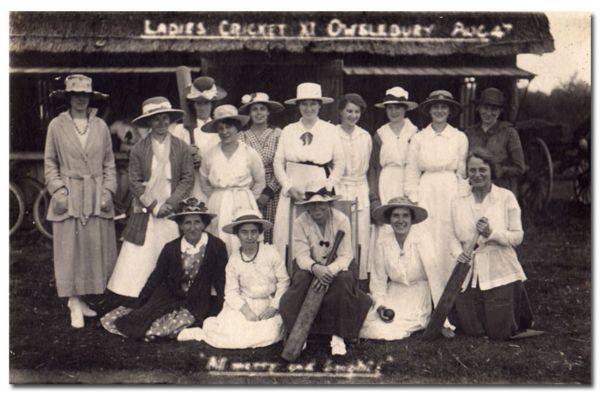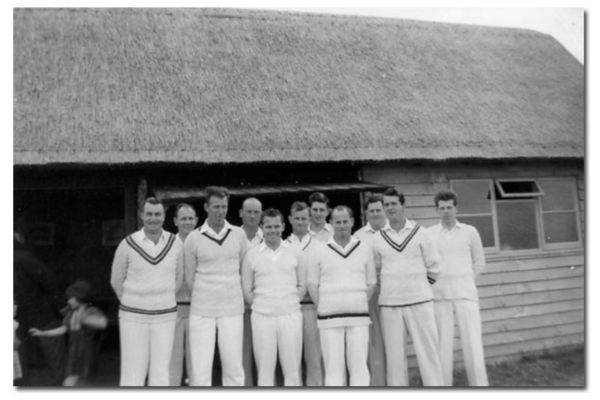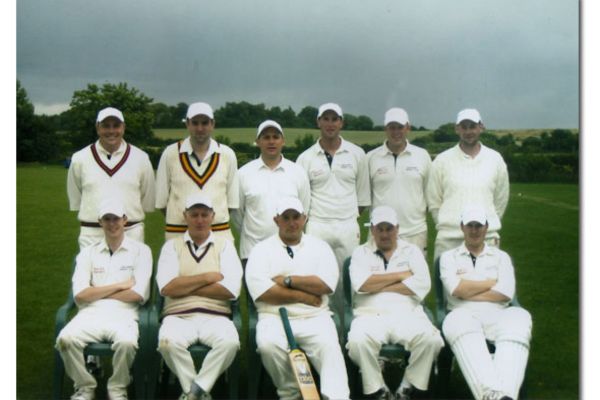It is situated 6 miles south-east of Winchester, on a windswept chalk ridge 350 feet above sea level. Owslebury and Morestead is a scattered parish picturesquely located among the hilly downs and woodlands and commands views of the Isle of Wight, Cheesefoot Head, and towards Preshaw and Beacon Hill and the Meon Valley. Surrounding Owslebury village are the Hamlets of Baybridge, Marwell, Hensting and Morestead.
Owslebury, Morestead, Marwell, Baybridge and Hensting are all Saxon names. Oselbyrig occurs in a Latin chartor of King Edgar (959-975), who granted
lands there to Winchester Cathedral. The name is derived either from O.E. Osla the name of a person and means Osla’s camp, or from O.E. Osle, “black-bird” meaning “the camp or fortified place of the blackbird.” Either is possible. Baybridge is named after a person, Babba’s ridge and Marwell means spring of the pond. Morestead means “the place by the moor” and was first instanced in 1172, att the Domesday survey (1086) Elded, wife of Oswold, held it.
In AD 964 land at Owslebury was granted to the Bishop of Winchester by King Edgar. According to the Domesday Book the Manor of Owslebury was held by the bishop before and after the Norman Conquest.
In 1128 Henry de Blois grandson of William the Conqueror founded Capella de Merewell, a Chantry Chapel dedicated to St Stephen and St Lawrence. Alongside the Chapel he built a Palace and excavated a moat using the excavation to build the local fish ponds.
In 1226 Bishop de Roches augmented the foundation to include a Prior and in 1305 Bishop Woodlock augmented it to a College.
In the early days the manor was called Twyford with Marwell, but during the fourteenth century it became known as Marwell, although the parish was still called, Owslebury.
The Woodlock family enclosed lands at Marwell (now known as Marwell Zoological park) and paid rent to the bishop. In the sixteenth century Bishop Fox leased Marwell Woodlock in secret so that he could found the college of Corpus Christi at Oxford, 1515-16.
Marwell Hall was traditionally the scene of the courtship of Henry VIII and Lady Jane Seymour and the infamous location of the misletoe bride.
The Bishop continued his residence at the Bishops Palace at Lower Marwell until after the dissolution, the Manor of Marwell passed to the crown in 1551. It was granted to the King’s Protector Sir Henry Seymour the same year, his initials are inscribed over the front door.
When Queen Mary came to the throne the Manor of Marwell was restored to the bishopric of Winchester, but it passed back to the Seymour family by 1577.
In 1626 the manor was conveyed to Sir Henry Mildmay, he removed the tapestries, dismantled the buildings (keeping meticulous records) to build 5 farmhouses in the locality including the farmhouse at Hensting Lane which contains the upside down vigil of Bishop Langton 1493 -1501 no doubt as an objection to the crown.
Longwood Warren and farm also belonged to the bishop until 1589 when it was granted to Thomas Ellys and Edward VaughanE
There are some very interesting articles and facts about Owslebury’s past ranging from a murder in the Parish, parishioners accounts of day to day life, the agricultural riots in the 18th Century, Longwood House, to memories of Owslebury School. Click Historical-1 for further information. For births, deaths, electoral rolls, trade directories and one of the original newsletters, click Historical-information-2



Village cricket here dates to the 1830’s, and is second to Broad Halfpenny Down – the birthplace of cricket. A newspaper cutting of 1840 held, states: “The Cricket Club possessed two strong teams, and played courtesy of landowners at Marwell or Longwood”
(Lord Tennyson played for the village while a guest at Marwell).
There was no Longwood road, then, it was all “Owslebury Down” with just a cart track to the village itself from Longwood.
In 1906 the owner of Longwood gave the present ground to the village for cricket, and enthusiastic cricketers began preparing a cricket pitch, which took then two years to make playable.
George Pierce writes: “ I was secretary to the Cricket Club and we had to raise £80 (on the then wages) to make the table and build the Pavilion”
In 1906 also, a Football Club was formed and had their own ground courtesy of the local landowner, opposite the Cricketers Inn (now Northwood House).
Having lost many players in W.W.1 the Club was disbanded, and did not form again until the 1950’s, when, without a ground, they sought permission to play, until then, on part of the cricket ground.
Cricket Minutes 1909: “A vote of thanks be recorded to Lord Northesk for his kindness in lending his ground. A vote of thanks be recorded to Mr Dunlop for his work in preparing the pitch for the season”.
The Committee accepted a tender of £44-15-0 from Mr Tithecot to erect a Pavilion on the Recreation Ground. (Money raised by suppers, dances, whist drives etc. No mean feat in those days!)
In 1910 the minutes state: “The Pavilion has now been paid for”.
It was eventually thatched at a cost of £2-10-00!
Cricket Minutes – 16th March 1911: “It was the wish of members present that a vote of thanks be passed to Mr Lucas for the gift of trees for the cricket ground in memory of King Edward VII, also for the addition to the Pavilion”
Mr George Pierce (famed headmaster of Owslebury School) wrote in 1960: “Amongst our famous men of the village was the Captain of the Cricket Club, Mr R McDonald Lucas, an Architect to the Borough of Southampton.He designed the railways and the Bargate. He built Baybridge House, but spent most of the winter in France, where he wrote a book on cricket”.
David Harfield in action. Fond of ‘sixes’ and wicket taking! David’s Grandfather, Harold was one of the 18 children born at Baybridge. All the boys were cricketers and grandsons still continue playing for the village.
1908 – 2008 – 100 years of cricket here in the village on our Recreation Ground
E.H. November 2007